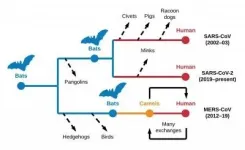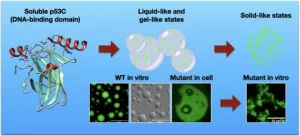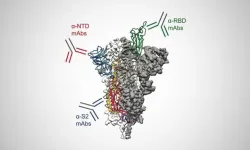(Press-News.org) During the next 10 years, an estimated half-million individuals in the U.S. with autism spectrum disorder (ASD) are expected to transition from adolescence to adulthood, according to the Centers for Disease Control and Prevention.
That means thousands of these young adults will likely fall into a widening and potentially devastating gap in a variety of services--because they're too old for high school, but may not qualify for Medicaid-funded services, social work researchers at Case Western Reserve University predict in a new study.
The team of researchers from the Jack, Joseph and Morton Mandel School of Applied Social Sciences interviewed 174 families from Northeast Ohio to examine the use of health, medical and social services for youth with autism--from 16 to 30 years old--and their family caregivers. The study was funded by the International Center for Autism Research and Education (ICARE) through a Mt. Sinai Health Care Foundation catalytic grant and a grant from the Mandel School.
The findings, recently published in the Journal of Autism and Developmental Disorders, show that having a Medicaid waiver and high school enrollment emerged as "the most robust and consistent" predictors of youth with autism and their families using available services.
Those services include improved job training and access to medical care, speech and occupational therapy and transportation. Autism, a neurological condition typically diagnosed by age 3, often affects a person's communication abilities and social skills.
Having ample services available is vital, said Karen Ishler, a senior research associate at the Mandel School and the study's lead author.
"These findings provide a snapshot of the 'service cliff' faced by families and highlight the need for additional research," she said. "It reaffirms that once individuals leave high school, they are less likely to receive services. But having a Medicaid waiver provides a gateway to receiving all sorts of services."
David Biegel, the Henry L. Zucker Professor of Social Work Practice Emeritus at the Mandel School and a co-author of the study, noted that how states administer Medicaid waivers varies widely. Ohio has been generous in some regards, he said, but other states have done better for those with autism.
"Pennsylvania, for example, has a Medicaid waiver available specifically for those with autism," he said. "So when you apply, you don't have to compete with individuals with other health conditions."
Ishler said states like Ohio could take a lead role to address the issue, "but that also takes dollars and some motivation."
That would involve finding other options for funding services, changing eligibility requirements for Medicaid waivers and reducing the wait list, the researchers said. "Autism spectrum disorder affects the entire family," Biegel said.
"Many young people with ASD are at risk for reduced quality of life in adulthood," he said. "Additionally, families of adolescents and young adults with ASD face all kinds of stressors--especially during those critical, post-high school transition years."
Take, for example, finding a job. Students with autism are allowed to stay in Ohio public schools until age 22. When they finish, though, employment training and supports often dry up, according to the study.
It's something only made more challenging by the global COVID-19 pandemic.
"I think about some of these families, about how difficult it must be at home--especially for those whose youth have complex service needs," Ishler said.
INFORMATION:
Study participants were referred from 28 agencies and organizations across northeast Ohio. The authors also partnered with one local organization--Milestones Autism Resources, a nonprofit that provides support, evidence-based strategies and coaching to families of individuals with autism--to disseminate study findings.
HOUSTON - (May 4, 2021) - Private equity investment in hospitals has grown substantially in the 21st century, and it accelerated in the years leading up the COVID-19 pandemic. Now a new study of short-term acute care hospitals acquired by private equity firms finds they not only have higher markups and profit margins, they're also slower to expand their staffs.
In a study published in Health Affairs, a multi-institutional team of investigators led by Dr. Anaeze C. Offodile II, a nonresident scholar in the Center for Health and Biosciences at Rice University's Baker Institute for Public Policy, the Gilbert Omenn Fellow at the National Academy of Medicine and an assistant professor of plastic and reconstructive surgery at The University of Texas MD Anderson Cancer Center, examined ...
ORLANDO, Fla. (May 3, 2021) - Researchers have identified a gene expressed in children with acute myeloid leukemia (AML) that could serve as a new immunotherapy treatment target, according to a new study published today in Blood Advances, a journal of the American Society of Hematology. The study, co-authored by researchers with Nemours Children's Health System, outlines the process and potential path for new immunotherapy drugs that improve survival and reduce treatment-related toxicity in children with AML.
Leukemia is the most common cancer in children and teens, and AML accounts for nearly one-fourth of those cases. AML is a fast-growing cancer that typically starts in immature bone marrow cells.
"Using ...
Coronavirus (CoVs) infection in animals and humans is not new. The earliest papers in the scientific literature of coronavirus infection date to 1966. However, prior to SARS-CoV, MERS-CoV, and SARS-CoV-2, very little attention had been paid to coronaviruses.
Suddenly, coronaviruses changed everything we know about personal and public health, and societal and economic well-being. The change led to rushed analyses to understand the origins of coronaviruses in humans. This rush has led to a thus far fruitless search for intermediate hosts (e.g., civet in SARS-CoV and pangolin in SARS-CoV-2) rather than focusing on the important work, which has always been surveillance of ...
When was the last time you repainted your car? Redesigned your coffee mug collection? Gave your shoes a colorful facelift?
You likely answered: never, never, and never. You might consider these arduous tasks not worth the effort. But a new color-shifting "programmable matter" system could change that with a zap of light.
MIT researchers have developed a way to rapidly update imagery on object surfaces. The system, dubbed "ChromoUpdate" pairs an ultraviolet (UV) light projector with items coated in light-activated dye. The projected light alters the reflective properties of the dye, creating colorful new images in just a few minutes. The advance could accelerate product development, enabling product designers to churn through ...
Since it was first introduced in 2016, transparent wood has been developed by researchers at KTH Royal Institute of Technology as an innovative structural material for building construction. It lets natural light through and can even store thermal energy.
The key to making wood into a transparent composite material is to strip out its lignin, the major light-absorbing component in wood. But the empty pores left behind by the absence of lignin need to be filled with something that restores the wood's strength and allows light to permeate.
In earlier versions of the composite, researchers at KTH's Wallenberg Wood Science Centre used fossil-based polymers. Now, the researchers have successfully tested an eco-friendly alternative: limonene acrylate, a monomer made ...
Cancer has been recently shown to be affected by protein clusters, particularly by the aggregation of mutant variants of the tumor suppressor protein p53, which are present in more than half of malignant tumors. However, how the aggregates are formed is not yet fully understood. The understanding of this process is expected to provide new therapeutic tools able to prevent proteins to clump and cancer progression.
In Brazil, researchers at the Federal University of Rio de Janeiro have identified a key mechanism behind the mutant p53 aggregation process, linked to cancer pathology, opening new paths for the development of novels ...
BAR HARBOR, MAINE — Our kidneys are charged with the extraordinary task of filtering about 53 gallons of fluid a day, a process that depends on podocytes, tiny, highly specialized cells in the cluster of blood vessels in the kidney where waste is filtered that are highly vulnerable to damage.
In research at the MDI Biological Laboratory in Bar Harbor, Maine, a team led by Iain Drummond, Ph.D., director of the Kathryn W. Davis Center for Regenerative Biology and Aging, has identified the signaling mechanisms underlying podocyte formation, or morphogenesis. The discovery opens the door to ...
A team of University of Alberta researchers has discovered a way to use 3-D bioprinting technology to create custom-shaped cartilage for use in surgical procedures. The work aims to make it easier for surgeons to safely restore the features of skin cancer patients living with nasal cartilage defects after surgery.
The researchers used a specially designed hydrogel--a material similar to Jell-O--that could be mixed with cells harvested from a patient and then printed in a specific shape captured through 3-D imaging. Over a matter of weeks, the material is cultured in a lab to become functional cartilage.
"It takes a lifetime to make cartilage in an individual, while this method takes about four weeks. So you still expect ...
Metallacages prepared via coordination-driven self-assembly have received extensive attention because of their three-dimensional layout and cavity-cored nature. The construction of light-emitting materials employing metallacages as a platform has also gained significant interest due to their good modularity in photophysical properties, which bring emerging applications in fields as diverse as sensing, biomedicine, and catalysis.
However, the luminescence efficiency of conventional luminophores significantly decreases in the aggregate state because they encounter unfavorable aggregation-caused quenching (ACQ). Therefore, it was quite a challenge to fabricate light-emitting metallacages with high luminescence efficiency in various physical states.
In 2001, Tang's group ...
The most complete picture yet is coming into focus of how antibodies produced in people who effectively fight off SARS-CoV-2 work to neutralize the part of the virus responsible for causing infection. In the journal Science, researchers at The University of Texas at Austin describe the finding, which represents good news for designing the next generation of vaccines to protect against variants of the virus or future emerging coronaviruses.
Previous research focused on one group of antibodies that target the most obvious part of the coronavirus's spike protein, called the receptor-binding domain (RBD). Because the RBD is the part of the spike that attaches directly to human cells and enables the virus to infect them, ...






